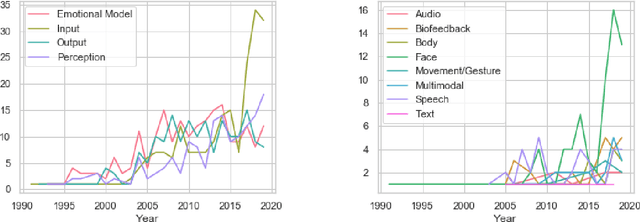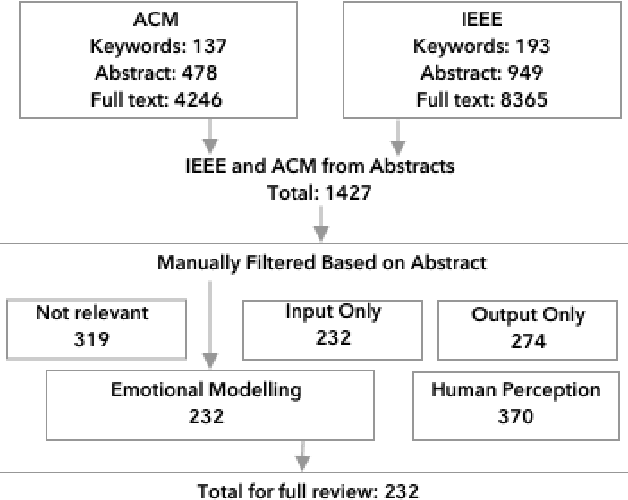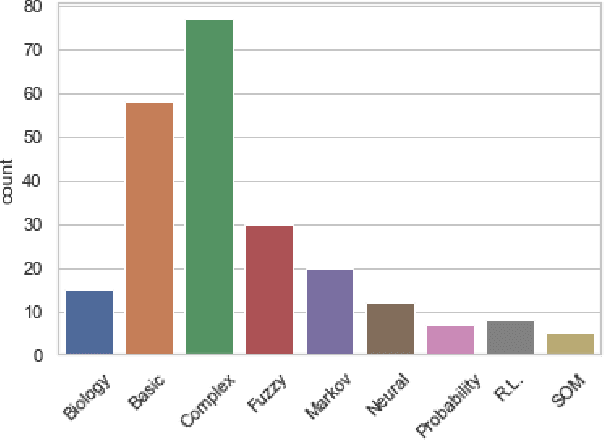A Survey of Robotics and Emotion: Classifications and Models of Emotional Interaction
Paper and Code
Jul 29, 2020



As emotion plays a growing role in robotic research it is crucial to develop methods to analyze and compare among the wide range of approaches. To this end we present a survey of 1427 IEEE and ACM publications that include robotics and emotion. This includes broad categorizations of trends in emotion input analysis, robot emotional expression, studies of emotional interaction and models for internal processing. We then focus on 232 papers that present internal processing of emotion, such as using a human's emotion for better interaction or turning environmental stimuli into an emotional drive for robotic path planning. We conducted constant comparison analysis of the 232 papers and arrived at three broad categorization metrics; emotional intelligence, emotional model and implementation, each including two or three subcategories. The subcategories address the algorithm used, emotional mapping, history, the emotional model, emotional categories, the role of emotion, the purpose of emotion and the platform. Our results show a diverse field of study, largely divided by the role of emotion in the system, either for improved interaction, or improved robotic performance. We also present multiple future opportunities for research and describe intrinsic challenges common in all publications.
 Add to Chrome
Add to Chrome Add to Firefox
Add to Firefox Add to Edge
Add to Edge